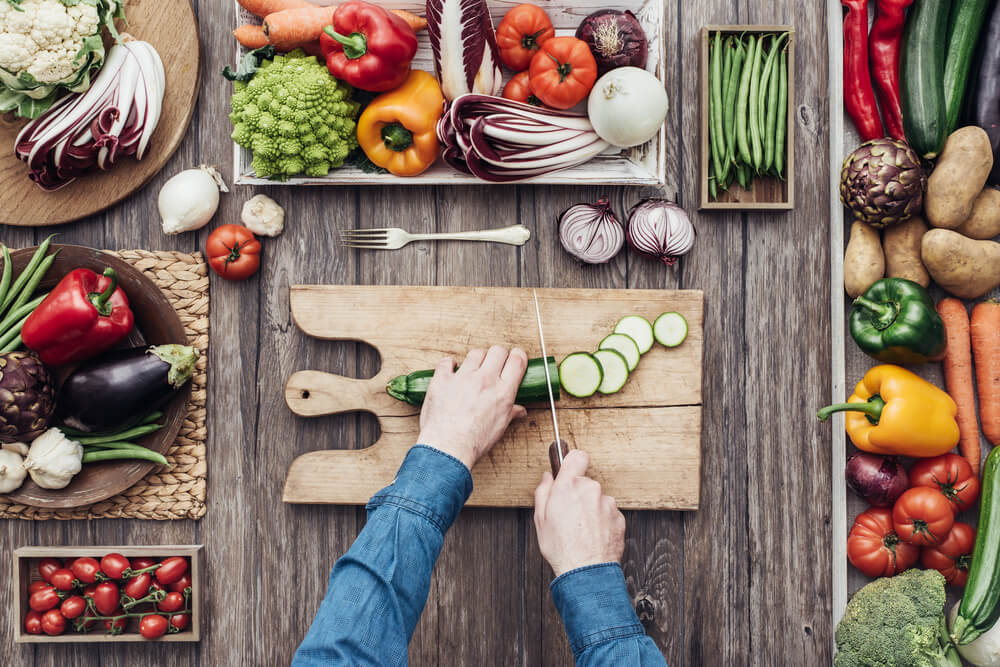Eating a balanced diet
Eating a healthy, balanced diet is an important part of maintaining good health, and can help you feel your best.
This means eating a wide variety of foods in the right proportions, and consuming the right amount of food and drink to achieve and maintain a healthy body weight.
Food groups in our diet
The Eatwell Guide shows that to have a healthy, balanced diet, people should try to:
- eat 5 A Day
- base meals on starchy foods like potatoes, bread, rice or pasta
- have some dairy or dairy alternatives (such as soya drinks)
- eat some beans, pulses, fish, eggs, meat and other protein
- choose unsaturated oils and spreads, eaten in small amounts
- drink plenty of fluids
If you’re having foods and drinks that are high in fat, salt and sugar, have these less often and in small amounts.
Try to choose a variety of different foods from the 5 main food groups.
Most people in the UK eat and drink too many calories, too much fat, sugar and salt, and not enough fruit, vegetables, oily fish or fibre.
Read our page on understanding calories.
Fruit and vegetables: are you getting your 5 A Day?
Fruit and vegetables are a vital source of vitamins and minerals, and should make up just over a third of the food we eat each day.
It’s advised that we eat at least 5 portions of a variety of fruit and vegetables every day.
There’s evidence that people who eat at least 5 portions a day have a lower risk of heart disease, stroke and some cancers.
Eating 5 portions is not as hard as it sounds. Just 1 apple, banana, pear or similar-sized fruit is 1 portion (80g).
A slice of pineapple or melon is 1 portion. Three heaped tablespoons of vegetables is another portion.
Having a sliced banana with your morning cereal is a quick way to get 1 portion. Swap your mid-morning biscuit for a tangerine, and add a side salad to your lunch.
Have a portion of vegetables with dinner, and snack on fresh fruit with natural plain yoghurt in the evening to reach your 5 A Day.
For more tips on getting your 5 portions of fruit and veg, check out our 5 A Day page.
Starchy foods in your diet
Starchy foods should make up just over a third of everything we eat. This means we should base our meals on these foods.
Potatoes with the skins on are a great source of fibre and vitamins. For example, when having boiled potatoes or a jacket potato, eat the skin too.
Try to choose wholegrain or wholemeal varieties of starchy foods, such as brown rice, wholewheat pasta and brown, wholemeal or higher fibre white bread.
They contain more fibre, and usually more vitamins and minerals, than white varieties.
Learn more from our starchy foods page.
Milk and dairy foods: go for lower-fat varieties
Milk and dairy foods such as cheese and yoghurt are good sources of protein. They also contain calcium, which helps keep your bones healthy.
To enjoy the health benefits of dairy without eating too much fat, use semi-skimmed, 1% fat or skimmed milk, as well as lower-fat hard cheeses or cottage cheese, and lower-fat, lower-sugar yoghurt.
Unsweetened calcium-fortified dairy alternatives like soya milks, soya yoghurts and soya cheeses also count as part of this food group and can make good alternatives to dairy products.
Learn more about milk and dairy foods.
Beans, pulses, fish, eggs, meat and other proteins
These foods are all good sources of protein, which is essential for the body to grow and repair itself. They’re also good sources of a range of vitamins and minerals.
Meat is a good source of protein, vitamins and minerals, including iron, zinc and B vitamins. It’s also one of the main sources of vitamin B12.
Try to eat lean cuts of meat and skinless poultry whenever possible to cut down on fat. Always cook meat thoroughly.
Learn more by reading our page on meat.
Fish is another important source of protein, and contains many vitamins and minerals. Oily fish is particularly rich in omega-3 fatty acids.
Aim for at least 2 portions of fish a week, including 1 portion of oily fish.
You can choose from fresh, frozen or canned, but remember that canned and smoked fish can often be high in salt.
Eggs and pulses (including beans, nuts and seeds) are also great sources of protein.
Nuts are high in fibre and a good alternative to snacks high in saturated fat, but they do still contain high levels of fat, so eat them in moderation.
Learn more from our pages on eggs and pulses and beans.
Oils and spreads
Some fat in the diet is essential, but should be limited to small amounts.
It’s important to get most of our fat from unsaturated oils and spreads. Swapping to unsaturated fats can help lower cholesterol.
Eat less saturated fat and sugar
Too much saturated fat can increase the amount of cholesterol in the blood, which increases your risk of developing heart disease, while regularly consuming foods and drinks high in sugar increases your risk of obesity and tooth decay.
Find out more about why we need to cut down on saturated fat and sugar in our diet, which foods they occur in, and how we can make healthier choices in 8 tips for healthy eating.
Need to lose weight?
Most adults in England are overweight or obese. Check whether you’re a healthy weight using the BMI calculator.
Download the NHS weight loss guide, our free 12-week diet and exercise plan to help you lose weight and develop healthier habits.
The plan, which has been downloaded more than 2 million times, is designed to help you lose weight safely – and keep it off.





